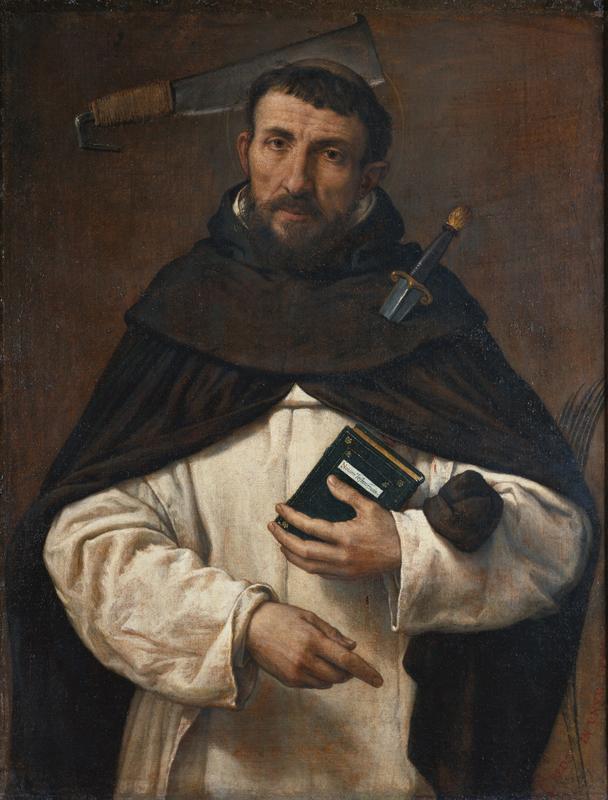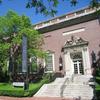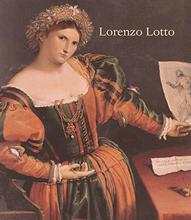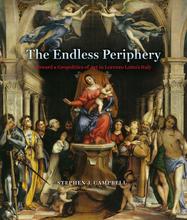More about Friar Angelo Ferretti as Saint Peter Martyr
- All
- Info
- Shop

Sr. Contributor
At the Harvard Art Museums/Fogg Museum, there hangs a painting of Friar Angelo Ferretti as Saint Peter Martyr.
What makes this depiction of a saint unique is that this poor guy has a meat cleaver embedded in the back of his head, and seems to be completely oblivious to it. Oh, and then there’s the dagger sticking out of his chest as well, but luckily, he appears to be uninjured.
Lorenzo Lotto painted this image in 1549, but at some point, the cleaver was painted over, and this wasn’t discovered until conservation work was done in 1923. Twenty years after that, it was revealed that the edges of the painting had been folded behind the stretcher (not sure how this was missed during the previous work), and on the folded parts were Lotto’s signature and an inscription reading: Credo in Unum Deum, meaning “I believe in one God.” These words were supposedly written by Peter using his own blood as he lay dying.
For this painting, the friar is posing as Saint Peter Martyr, also known as Saint Peter of Verona, who was murdered by a Cathar assassin with a meat cleaver or axe while traveling to his home in Milan. Peter’s specialty was preaching against heresies, in particular Catharism, which angered the Cathars enough that some of them conspired to kill Peter. Eleven months after his death, he was made a saint by the Catholic Church, which must have really infuriated the Cathars.
Lotto was not a hugely successful painter in his day, especially in his home of Venice; in 1548, the poet and satirist Pietro Aretino, also a Venetian, wrote to Lotto that he was “outclassed in the profession of painting” by none other than Titian. Now, it’s definitely difficult to follow in the footsteps of a master like Titian, but still, cut the guy some slack. It wasn’t just in Venice that he didn’t get the respect, or more importantly, the payment, that he felt was due him; in Bergamo, after completing a series of drawings of Biblical scenes for the church of Santa Maria Maggiore (that would later be inlaid with wood), the patron who commissioned them refused to pay Lotto what he was owed. Talk about not getting any respect. Well, he would only have to wait a few hundred years for that.
Sources
- “Art Review: Lorenzo Lotto Portraits at the National Gallery.” The Church Times - News, comment, features, book reviews and more, n.d. https://www.churchtimes.co.uk/articles/2018/14-december/books-arts/visu…
- Harvard. “From the Harvard Art Museums' Collections Friar Angelo Ferretti as Saint Peter Martyr.” From the Harvard Art Museums' collections Friar Angelo Ferretti as Saint Peter Martyr, n.d. https://www.harvardartmuseums.org/collections/object/300021?posit
- “The Subtle Meat Cleaver: Opinion: The Harvard Crimson.” The Subtle Meat Cleaver | Opinion, n.d. https://www.thecrimson.com/column/meeting-in-the-margins/article/2015/4….
- Gayford, Martin. "Lorenzo Lotto's Time has Come." The Spectator, Dec 16, 2017, https://0-search.proquest.com.pacificatclassic.pacific.edu/docview/1976….
- Randall, Frederika. "Lorenzo Lotto: In the Wanderer's Footsteps." Wall Street Journal, May 29, 1998, Europe. https://0-search.proquest.com.pacificatclassic.pacific.edu/docview/3083….













